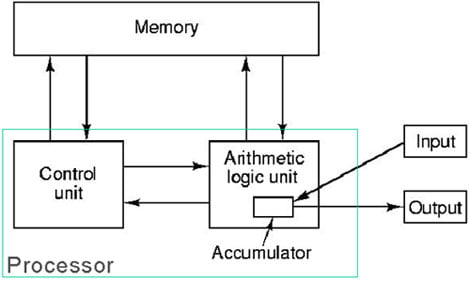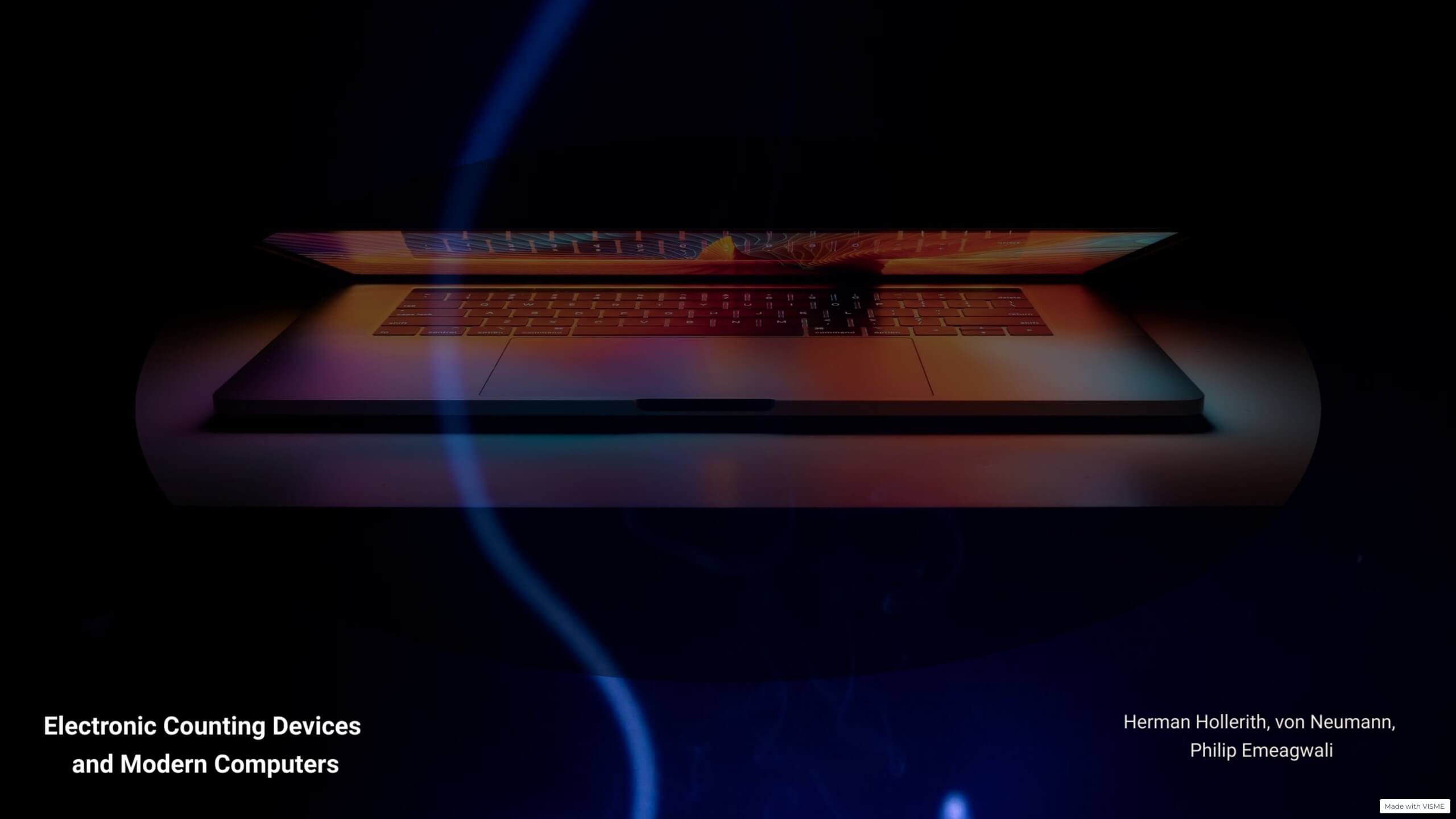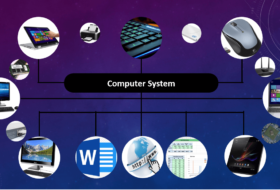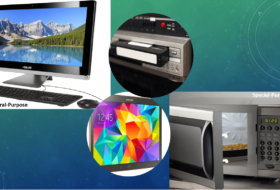Electronic counting devices are improved mechanical devices that use electricity circuitry to function effectively. These devices finally paved the way for modern computing technology.
The modern computer was built through the inspired works gathered from the electromechanical counting devices. Notable among them is the Jacquard’s loom and Babbage’s analytical engine. They are called stored-program computers, following the Neumann architecture.

In this tutorial, we shall discuss the following:
- Herman Hollerith punch cards
- Neumann machine
- Modern computers
- Philip Emeagwali
Herman Hollerith Punch Cards
Herman Hollerith punch cards device is an electronic tabulation machine used in statistical calculation and analysis. The device was born out of a government contest to devise a solution to end the 1890 census earlier than the 10-years proposed.
Herman Hollerith was a German-American statistician, inventor, and businessman. He invented the punched card tabulating machine which were used in summarizing statistical and accounting information. His invention took place in 1882 – 1884 when he filed for his first patent.
The machine was used to process information obtained in the 1890 United States population census. With this machine, he was able to achieve in three years would have taken ten years to accomplish manually.

Hollerith used Jacquard’s punched-card idea to feed personal statistics into his machine. Holes in the punched cards stood for a person’s age, sex, state, and other similar information. There was one card for each person.
As each card was fed into the machine, a set of metal pins were brought down on the card. The cards are then processed by pushing down the pins through the holes to enter cups of mercury underneath. The electrical circuitry is then completed by reading, sorting, or counting punched cards through a dial on the tabulator.
To sell the machine, Hollerith formed the Tabulating Machine Company in 1896. The company later merged with several other companies to form the Computing Tabulating Recording Company (CTR) in 1911. CTR later became part of the International Business Machines (IBM) in 1924.
Neumann machine
John von Neumann was a Hungarian-American computer scientist, engineer, mathematician, and physicist. He developed MANIAC – Mathematical analyzer, numerical integrator, and computer when he was a director at Princeton’s Institute for Advanced Study. MANIAC was the fastest computer at that time (1945-1955).
During his study, he described a design architecture for a digital computer. According to him, a digital computer should have the following components:
- The Input/ output components for entering data and outputting information from the computer.
- The processing unit includes the arithmetic logic unit (ALU) and processing registers.
- The control unit which has the program counters and instruction registers
- The memory that stores temporary data, instructions and mass data
- The bus that transmits data and information between the other units.

Neumann’s idea became an important contribution to organizing and building a high-speed digital computer system. His discovery was referred to as a stored-program technique, in which programs and data are stored differently. This architecture became the standard for future generations of high-speed digital computers and was universally adopted.
The principal feature of a von Neumann machine is that the program and data are both stored together. Storage usually takes place in the hard disk and is transferred as required to the memory (RAM). Data in the memory is then fetched for execution by the central processing unit (CPU).
Since this is practically how all present-day computers work, Neumann is termed the father of the modern computer.
Before Neumann’s idea, programs were viewed as an essential part of the machine. They are usually different from the data the machine executes. A common approach was to input the program by some physical means, such as wiring a plugboard. Data are manually fed into the machine for subsequent execution.
As a result of Neumann’s discovery, computing and programming became faster, more flexible, and more efficient.
In 1945, von Neumann proposed the stored program concept in his report on the EDVAC. Together with computer pioneers, J. Presper Eckert, John Mauchly, Arthur Burks, and Hermann Goldstine.
According to the original papers of the proposal, the new architecture has five parts: ALU, CU, memory, input/output, and bus. The bus provides a data path between these parts. There are a data bus, address bus, and control bus. Such a computer operates by performing the following sequence of steps:
- Fetch the instruction from memory at the address in the program counter.
- Add the length of the instruction to the program counter.
- Decode the instruction using the control unit.
- Go back to step 1.
Von Neumann computers have some drawbacks.
Von Neumann bottlenecks
Neumann’s architecture imposes a performance problem on a computer system. This problem is referred to as the Von Neumann bottleneck. By his architecture, the program memory and data memory share the same bus. This implies that the program memory and the data memory can access the bus one at a time.
By this, instructions can be processed one at a time. In particular, they carry out instructions one after another, in a single linear sequence. Also, they spend a lot of time moving data to and from the memory. This reduces the rate at which the CPU can work and the overall processing speed of the computer.
However, various solutions have been proposed to mitigate this bottleneck. Part of the solution is to:
- Provide a cache between the CPU and the main memory
- Provide different caches for data and instructions
- Use branch predictor algorithm
- Use parallel computing technique.
Modern computers
Following Neumann’s idea of stored-program computers, different kinds of computers were designed and produced. Some of these early computers are:
ENIAC
Electronic Numerical Integrator and Computer (ENIAC) was the first general-purpose and programmable computer. It used decimal rather than binary numbers and was first operational in December 1945.
Manchester Mark 1
This machine was designed and built at Victoria University of Manchester in England. It ran its operational version in April 1949.
EDSAC
EDSAC – Electronic Delay Storage Automatic Calculator was inspired by Neumann’s report on EDVAC. It was constructed by Maurice Wilkes and his team at the University of Cambridge Mathematical Laboratory, England. It ran its first program in May 1949.
EDVAC
Electronic Discrete Variable Automatic Computer – EDVAC succeeded ENIAC at More School of Engineering, Pennsylvania. It was finally delivered to the Ballistic Research Laboratory in 1949.
UNIVAC
Universal Automatic Computer was invented by Presper Eckert and John Mauchly. The first version was delivered to the census bureau in march 1951. Before UNIVAC, Eckert-Mauchly had built BINAC (Binary Automatic Computer). BINAC was the first general-purpose computer built for commercial use, but it was unsuccessful.
Philip Emeagwali
Philip Emeagwali is a Nigerian-American computer scientist and geologist. He is popularly called the Bill Gates of Africa due to his contribution to the development of a supercomputer.
His work with simultaneous calculations on connected microprocessors earned him a Gordon Bell Prize in 1989. The award, from IEEE, is considered the Nobel Prize in computing.
He developed a system to hook up over 60000 microprocessors rather than use eight expensive supercomputers to help analyze petroleum fields. His discovery led to the invention of the world’s fastest computer.
He programmed the Connection Machine to compute a world record 3.1 billion calculations per second using 65,536 processors to simulate oil reservoirs. The connections correctly detected the amount of oil in a simulated reservoir. He has submitted over 41 inventions to the US patent and trademark office.
List of Electronic Counting Devices
Counting devices refer to equipment or kits used to perform arithmetic operations. Some can handle simple, while others can handle complex arithmetic and logical operations.
The von Neuman architecture gave rise to the development of different general-purpose computers. These computers are used for counting and computations of varying degree.
As years passby, advancement in technology led to the invention of different sizes of electronic devices. Some are used for specific purpose, while others are general-purpose like the first computers.
Some of the past and present electronic counting devices include the following:
- Herman Hollerith punch cards
- ENIAC
- EDSAC
- EDVAC
- UNIVAC
- Manchester Mark 1
- Laptops, desktops, tablets, smartphones, and calculator
Conclusion
In this tutorial, we discussed electronic devices and the advent of the modern computer. Hollerith tabulation device was a known mechanical device that used an electrical circuit for a complete system of operation.
The Neumann architecture later paved the way for the development of a stored-program computer. This led to the invention of modern computers like Manchester Mark 1, EDSAC, ENIAC, and EDVAC computers.




